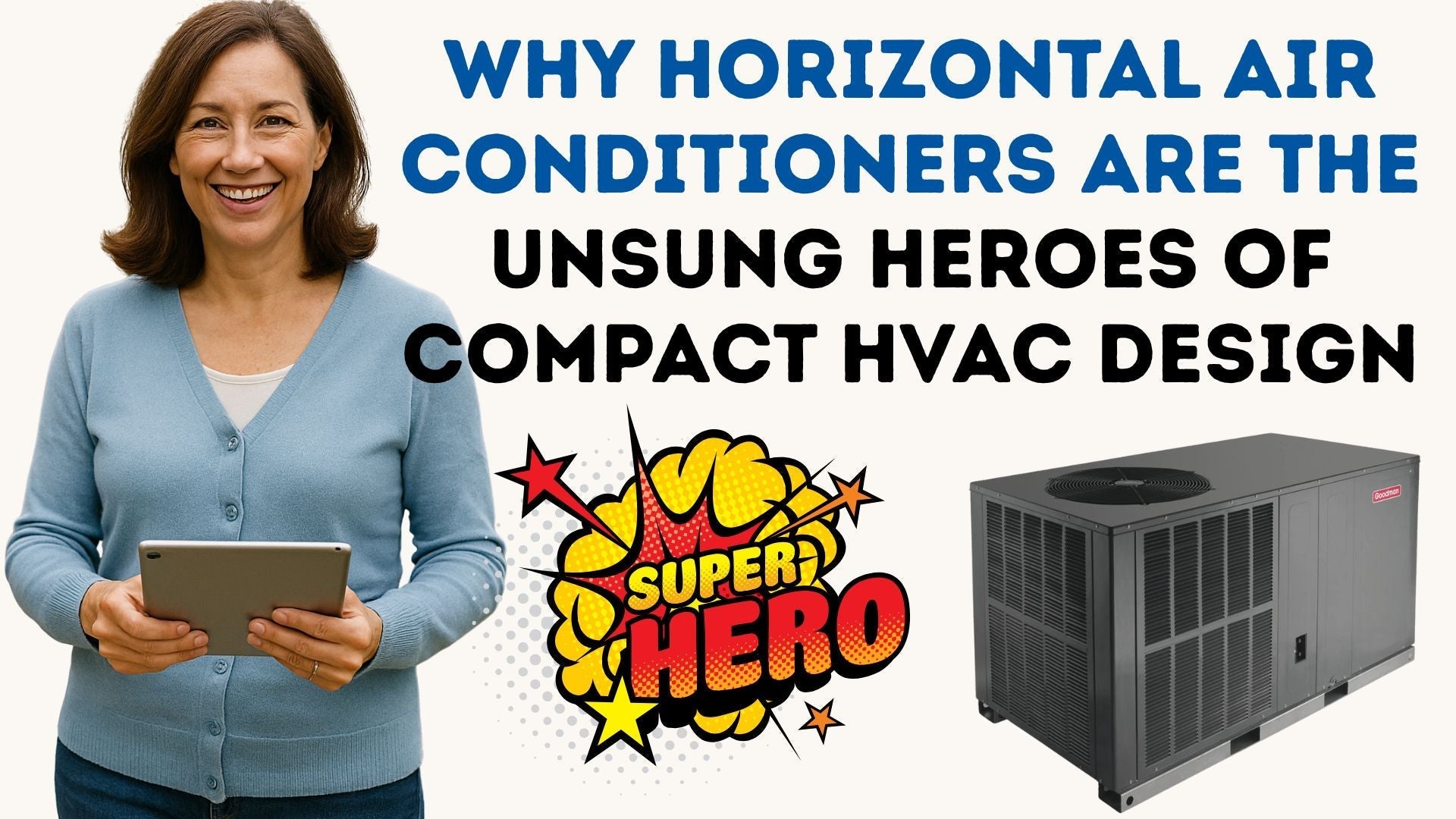Let’s talk about something few people appreciate until they’re in the thick of an HVAC renovation: space constraints.
If you’ve ever had to retrofit a cooling system into a basement, crawl space, attic, or older home without ductwork, you know how tricky airflow design can be. This is where horizontal air conditioners shine—especially compact models that use eco-friendly R32 refrigerant, like the Goodman GPCH33631.
As someone who’s managed a full HVAC upgrade in a tight-space older home, I can tell you—horizontal units aren’t just a workaround. They’re a smart, high-performance solution that deserves way more love.
What Is a Horizontal Air Conditioner, Exactly?
Unlike standard upright systems, horizontal AC units are designed to lie flat or be mounted horizontally in low-clearance areas. They push air sideways instead of up or down, which makes them perfect for:
-
Attics with low pitch
-
Crawl spaces
-
Mobile homes
-
Retrofit installations in older properties
The Goodman model we’re highlighting here delivers 3 tons of cooling, runs on R32 refrigerant, and fits where most vertical units simply won’t go.
Form + Function: Horizontal AC Efficiency Benefits
You might think horizontal systems are a compromise in performance. Nope.
The Goodman GPCH33631 boasts:
-
A 14.3 SEER2 rating
-
Durable scroll compressor
-
Corrosion-resistant coil
-
Quiet, efficient operation
The switch to R32 refrigerant makes it even more attractive. According to Daikin Global—a pioneer in R32 development—this refrigerant improves efficiency up to 10% while reducing environmental impact by 75% compared to legacy refrigerants.
It’s proof you can have both space efficiency and environmental responsibility in one package.
Horizontal Installations = Lower Installation Costs?
Sometimes, yes.
A horizontal layout can mean less ductwork rerouting, fewer structural changes, and easier access for technicians. That’s less time on-site—and less labor cost for you.
According to HomeAdvisor, average AC installation ranges from $3,800 to $7,500. But horizontal units may cut those costs by 10–20% in tight-space installs by reducing complexity.
Don’t Forget About Maintenance Access
Here’s something you might not consider until you’re six months post-install: Can your tech actually get to the unit?
Horizontal models often allow front or side panel access, making servicing easier—especially in narrow crawl spaces or above suspended ceilings.
And as HVAC School often points out, regular maintenance is key to long-term efficiency. Easier access = more consistent care.
A Perfect Fit for Energy-Conscious Homeowners
Between the smaller footprint, R32 efficiency, and SEER2 compliance, horizontal AC systems are ideal for today’s eco- and budget-conscious shopper. And if you're working in a renovation with limited vertical space, they’re not a compromise—they’re a step up.
Final Word from Samantha
We don’t always get to pick the perfect architectural layout of our homes—but we can choose HVAC systems that work with our space and values.
For me, the Goodman GPCH33631 hit the mark. It’s proof that sometimes the best things come in sleek, horizontal packages.
In the next topic we will cover about: Can Horizontal AC Units Help Lower Your Carbon Footprint? Let’s Talk R-32







